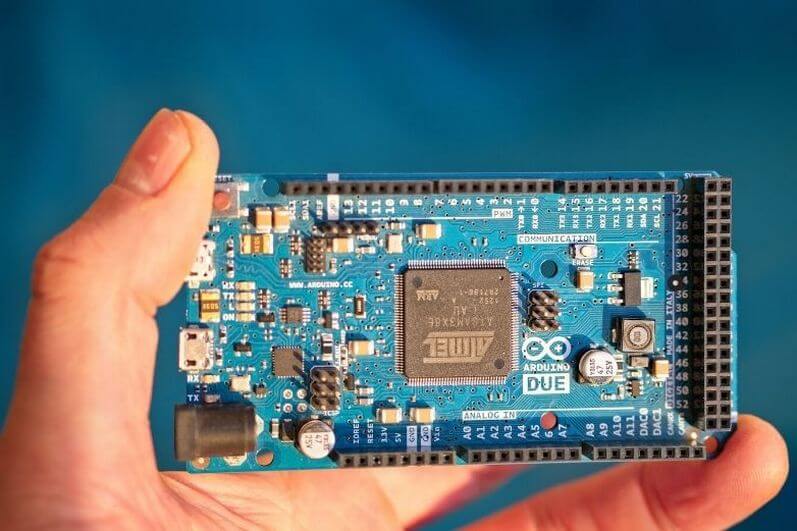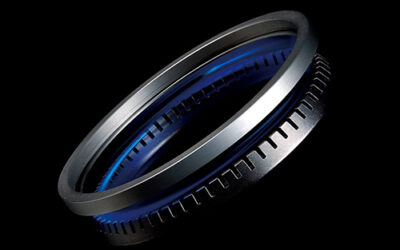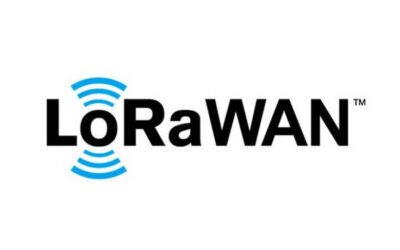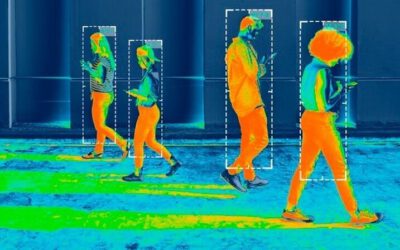Microcontrollers: An Integral Part of Embedded Hardware

Microcontroller units (MCUs) are miniature microcomputers created to control the functions of various home appliances, motor vehicles, office machines, robots, etc. Often referred to as embedded controllers, they contribute to various devices’ processing functionality, agility, and efficiency. However, to answer the question, “what is a microcontroller?” in more detail, one needs to explain its key characteristics:
Embedded Nature
One of the most important things you need to understand about microcontrollers is that they are placed inside other, more complex devices. In this way, they allow controlling the features or functions of these devices.
Small Size
The prefix “micro” shows that these integrated circuit (IC) devices are very small. The smallest microcontroller does not exceed 2 mm in size.
Low Energy Consumption
These tiny devices are low-power, meaning that they consume little electricity. MCUs using a battery may require about 50 milliwatts.
Controlling Function
If one looks at the term itself, they will easily answer the question, “what does a microcontroller do?” They control. These devices use a digital processor and digital memory specifically created to help them interact with other components. MCUs can illuminate LED screens, play sounds, trigger alarm systems, adjust the device’s functioning based on environmental conditions, etc.
Ruggedized Nature
Another significant feature of MCUs is their ability to work in harsh conditions (e.g., in temperature extremes). For instance, a microcontroller embedded in a car’s engine is designed to withstand very high temperatures without losing its functionality. However, not all embedded controllers have this feature. Those designed to work in normal conditions (e.g., within a VCR) simply do not need to be ruggedized.
The use of microcontroller devices is diverse. These tiny computers are embedded in many different devices, such as those listed below:
- Microwave ovens with LCD or LED screens and keypads
- Cruise control
- Anti-lock brakes
- Advanced stereo systems
- Dishwashers
- Digital cameras
- Answering machines
- Laser printers
- Telephones
- High-end refrigerators
As you can see, MCUs are applied in many day-to-day life devices, so there is a high chance that they surround you in your office and at home. You don’t even need to know how to use microcontrollers because these embedded devices do all the work for you. Moreover, these small computers are widely applied in industrial control devices and metering and measurement devices (e.g., voltmeter).
A Wi-Fi microcontroller is a distinct type of embedded controller that deserves to be described separately. These small computers inserted in various devices allow them to send and receive data via Wi-Fi connectivity. As such, these controllers play a crucial role in developing the Internet of Things. The low cost of wireless devices in which they are embedded makes them perfect for both industrial and day-to-day use.

Curious about how microcontrollers work? These devices complete tasks and implement programs through a Central Processing Unit (CPU), which makes them very similar to traditional computers. They run programs and store data using Random Access Memory (RAM). An embedded oscillator or a clock helps them control the processor speed. When you use any device with an embedded microcontroller, you interact with it through a LED screen, sensors, relays, keyboard, or other systems connected to the controller.
The described characteristics and functions explain the growing popularity of MCUs. These small but highly functional devices have many advantages, which include:
- Cost-effectiveness. MCUs are relatively easy to create, but they can significantly cut labor and overall costs.
- Microcontrollers are very small, so they help save space and make the devices smaller.
- Specialized tasks. MCUs make embedded devices highly functional and allow them to perform complex tasks that were once performed using more power and resources.
What a Microcontroller Consists of
Microcontrollers are small computers, so they are more complex in structure than one may think. These embedded controllers have the following components:
- CPU processor is one of the critical components, which helps the computer collect data, decode it, and implement the task. This part is the brain of MCU, allowing it to complete complex mathematical and logical tasks.
- RAM is the data memory, which functions as a temporary storage place for data and programs. Unlike read-only memory (ROM) that functions even without power, RAM is only used when the device is turned on.
- The oscillator acts are the clock; it monitors the rhythms of the computer’s internal processes. This part of the device helps keep track of the performed functions and initiate and stop them as needed.
- Input and output ports are the communication ports that connect the embedded controller with other device components and help it send signals.
- The system bus is the internal pathway connecting the CPU with memory.
- Converters such as analog to digital converter (ADC) and digital to analog converter (DAC) transform analog electrical signals into digital ones and vice versa.
- An additional functioning block is used in the most sophisticated devices such as robots and space systems. This component usually performs some narrow and complex functions not needed in day-to-day devices.

Types of Microcontrollers
Embedded controllers are classified based on parameters, such as internal bus width, instruction set, memory architecture, etc. Let’s discuss some of the main types of MCUs that allow understanding these controllers better.
The 8, 16, and 32-Bit Devices
The first group exemplified by Intel 8031/8051 implements simple logic and mathematical operations. The second group, which includes Intel 8096, can perform more complex tasks. The third group is the most sophisticated and widely used in the aerospace industry, mobile phones, etc. It is technically more data-efficient, which also makes it more expensive.
AVR vs. ARM Controllers
AVR microcontrollers were first created in 1996 based on RISC Instruction set Architecture (ISA). They are very popular and cheap but have smaller bus width and support fewer communication protocols than ARM. AVR controllers are produced by Atmel, while ARMs are manufactured by many companies, such as Nvidia, Apple, Samsung, and others. ARM controllers are more advanced and offer high-speed operation and more advanced functions.
Harvard vs. Princeton Architecture
MCUs based on the previously discussed design use separate signal and storage buses for different instructions and data. Princeton architecture, also called von Neumann architecture, employs a single data path or bus for both data and instruction. It means that MCUs of this type can only perform one function at a time.
External vs. Embedded memory
Some controllers do not have all the functioning blocks on the chip. For example, Intel 8031 lacks program memory. Embedded memory MCUs such as Intel 8051, in turn, have all the essential blocks on the chips.
Microcontrollers vs. Microprocessors
There is a subtle difference between microcontrollers and microprocessors (MPUs), often leading to the incorrect use of these terms. The problem is complicated by the fact that many MCUs and MPUs look alike, so even tech-savvy users cannot tell the difference between these embedded devices.

A microcontroller is a single-chip computer consisting of an MPU, RAM, ROM, input/output devices, etc. A microprocessor, however, has only the processing power and no RAM, ROM, and other chip components. Microprocessors can be expanded (e.g., by adding more memory to the chip). In contrast, expanding a microcontroller is not technically possible. If more processing power is required, a different model of MCU should be used.
Another difference worth mentioning is that microprocessors consume more power than microcontrollers, but they also have higher processing capabilities. Hence, microprocessors are not suitable for devices working on batteries. In addition, MPUs do not have the power saving mode, unlike MCUs that usually have this helpful feature.
Microprocessor controllers are the main components of a computer, and they are widely used in laptops and personal computers. Microcontrollers are themselves small computers, and they are used primarily on embedded devices.
The described distinctions between a microprocessor and microcontroller are becoming less prominent with the emergence of more sophisticated and versatile technologies. For many years, the integration of flash memory was the defining feature of microcontrollers. Meanwhile, even the most advanced embedded controllers did not have this component and relied on external flash memory. However, new microcontrollers use the process called shadowing to transfer data from external flash memory to dynamic random-access memory (DRAM). Thus, the distinction between MPUs and MCUs gradually disappears. It is now an MCU microprocessor or simply an upgraded embedded controller? It appears that even experts struggle to tell the difference. Since the distinction between the two is somewhat arbitrary, these devices can be whatever you want them to be.
Want to Develop Something Interesting but Don’t Know How? ADUK Knows!
Microcontroller production has been advancing significantly lately, giving us more complex and efficient controllers. If you are interested in this booming sphere and want to design an MCU, you will likely need professional help. ADUK experts know how to create an efficient microcontroller for embedded system. They are also aware of the nuances of microtechnology, such as the difference between microcontrollers and microprocessors. Their experience in hardware development helps create cost-effective, agile, and functional devices. ADUK team can also answer all your questions regarding MCU development, such as the following:
- What is a microcontroller used for?
- How much does a microcontroller cost?
- What is the role of an MCU in smart devices?
- How much time does it take to design an MCU?
For those of you who don’t have a specific plan, ADUK can offer valuable consulting services. The company has vast experience in this area and may help you set clear goals for MCU development, choose the most suitable type, and select the required features and specifications. Investing more time in proper planning will eventually pay off, as you will receive a highly specialized, efficient, and competitive device.
Recent Posts
- What Is an Exoskeleton Suit?
- Where can you use an ultrasonic motor?
- Smart Camera: System That You Can Use for a Wide Variety of Purposes
- Why Is the Smart Toothbrush Better Than a Regular One?
- Microcontrollers: An Integral Part of Embedded Hardware
- Air Quality Monitoring System: Why It’s So Important in Modern Realities





